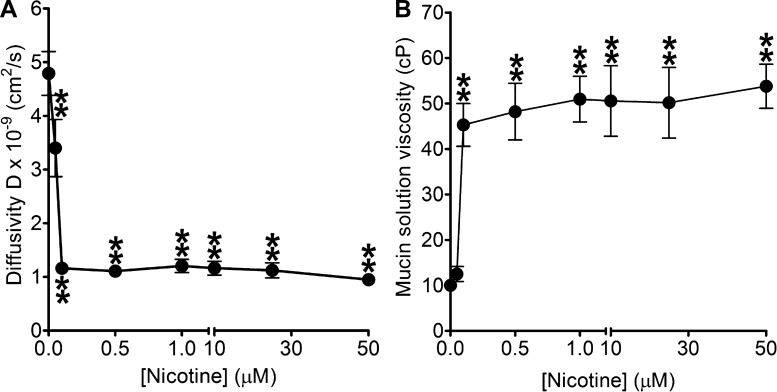Fig. 2.
Measurements of fluorescent particle displacement and microviscosity changes. A: multiple particle tracking was used to calculate mean-square displacements needed to derive diffusivity of 500-nm-diameter carboxylated polystyrene particles in 1% porcine gastric mucin solution with increasing nicotine concentration (0–50 μM) in PBS. The mucin content used in this experiment is consistent with the range found in cervical, nasal, and lung mucus (1–3% of by weight) (30). Diffusion coefficients of particles in nicotine (50 nM to 50 μM)-treated mucin samples (P < 0.0001; n ≥ 24; Student's t-test) decreased significantly when compared with the mucin-only control (n = 32). Data were presented as means ± SE; n represents the number of independent experimental samples investigated. B: diffusivity was then used to derive the values for mucin solution viscosity. The mucin solution viscosity values increased significantly from ∼10 cP (mucin-only control; n = 32) to ∼50 cP (100 nM to 50 μM nicotine; P < 0.0001; n ≥ 24; Student's t-test). Data were presented as means ± SE; n represents the number of independent experimental samples investigated.

